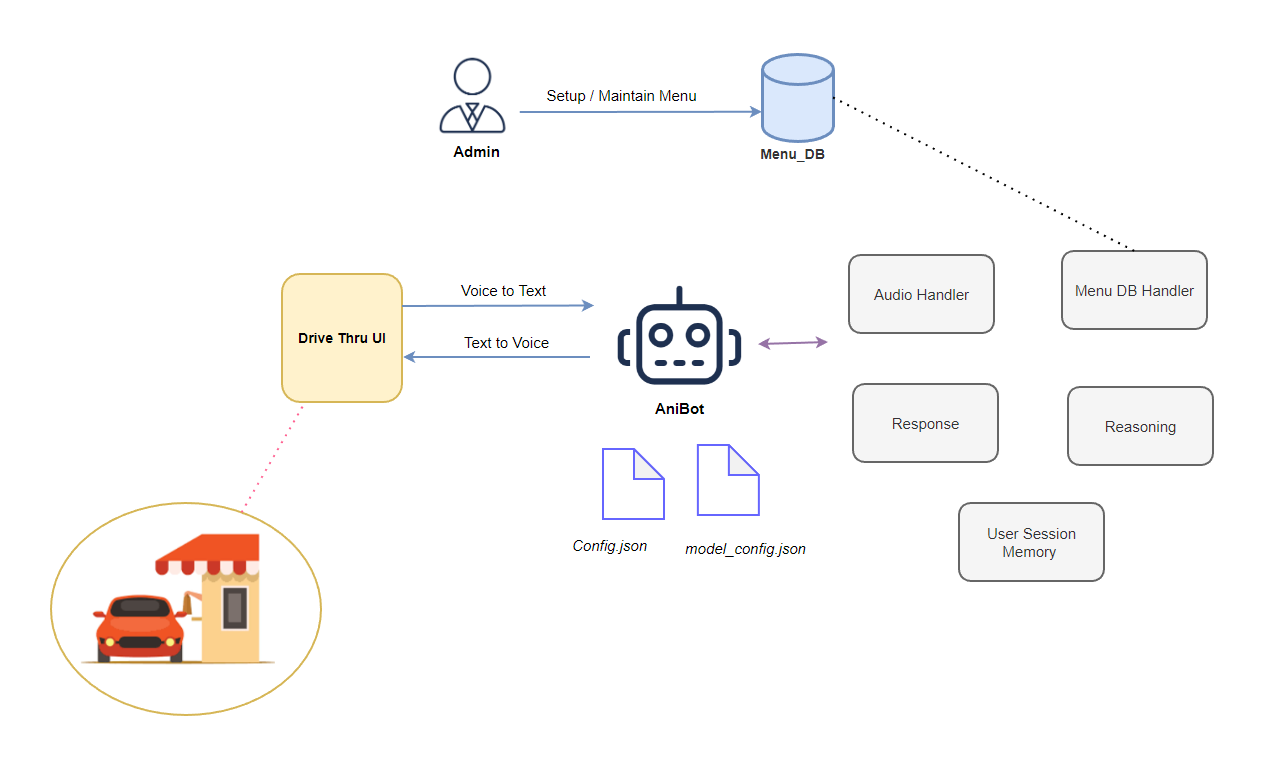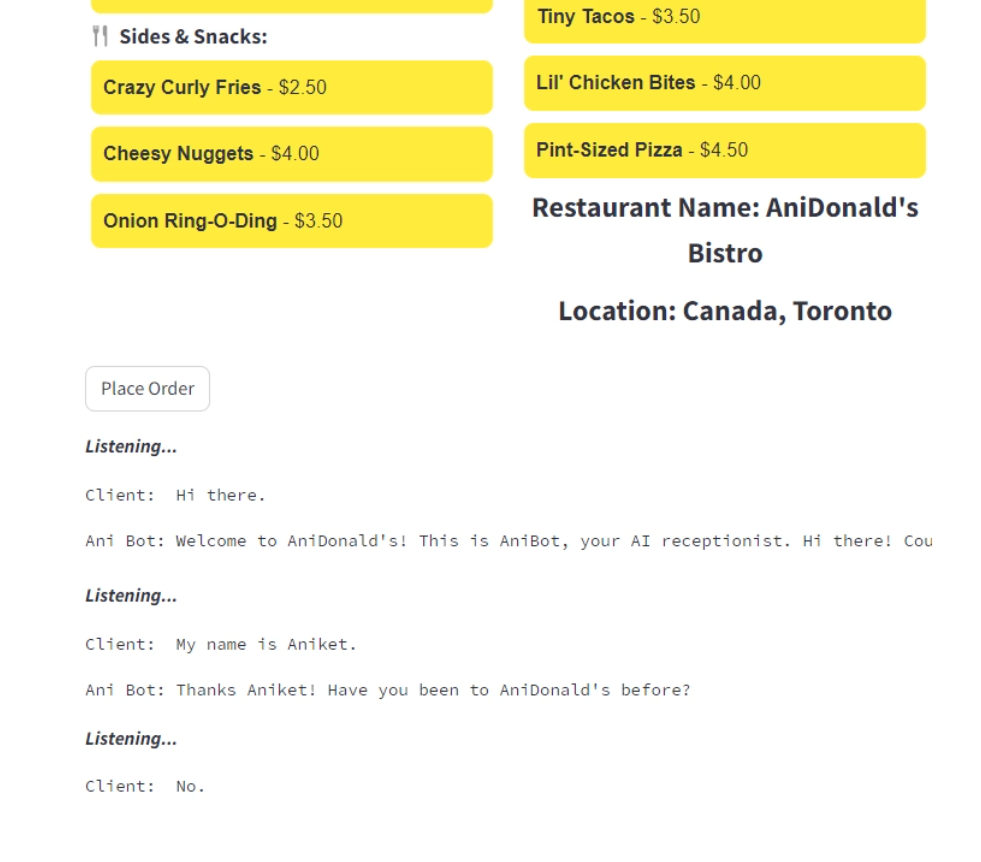How I Built McDonald’s Drive-Thru: All-AI, All-Local
 Aniket Hingane
Aniket Hingane
How I Built McDonald’s Drive-Thru: All-AI, All-Local
⚫ What's This Article About?
• This article details the creation of an AI-powered voice assistant for a fictional restaurant drive-thru called AniDonald's.
• The voice assistant interacts with customers, takes orders, and provides menu information, enhancing the drive-thru experience.
• The article focuses on the implementation process, using technologies like language models (LLM) for understanding language, speech recognition to convert voice to text, and vector databases to store and retrieve information efficiently.
⚫ Why Read This Article?
• Provides a practical, real-world example of AI integration into a business.
• Offers insights into how different AI technologies work together to build a functional system.
• Showcases the potential of AI to transform customer interactions and streamline processes in various industries.

⚫ Let's Design:
Admin:
Responsible for menu management (adding, updating, deleting items).
Interacts with the Menu_DB to make changes.
Menu_DB:
Database storing menu items, descriptions, prices, etc.
Provides menu data to the AniBot upon request.
Customer at Drive-Thru:
Interacts with the drive-thru interface to place orders.
Speaks into the system to give their order.
Drive-Thru UI:
Handles communication between customer and AI.
Converts speech to text (voice-to-text) and vice-versa (text-to-voice).
AniBot:
The core AI brain.
Processes customer's text input, understands the order.
Checks the Menu_DB to ensure order accuracy.
Formulates a response (e.g., confirms the order, asks for clarification).

• Let's Get Cooking! (Code Summary):
Ani(ket)Bot Module:
Loads configuration settings.
Sets up connections to the menu database and language model (Groq).
Creates an index to efficiently search the menu.
Audio Handler Module:
Records audio from the customer in chunks.
Checks if the audio is silent (to end recording).
Transcribes the audio into text using Whisper (a speech recognition model).
Drive-Thru Module:
Displays the menu in the Streamlit app.
Handles button clicks for starting the order process.
Manages the audio recording and transcription loop.
Displays the customer's input and AniBot's responses.
Menu DB Module:
Uses Qdrant, a specialized database for storing vector embeddings.
Creates the vector index for efficient menu searching.
Reasoning Module:
Sets up the language model (Groq) and chat engine.
Uses the chat engine to interact with the language model, providing relevant menu information from the index.
Generates responses based on the customer's input.
Closing Thoughts !
The implementation of the AniDonald’s drive-through voice assistant showcases the potential of AI to revolutionize customer service and operational efficiency in the restaurant industry. By leveraging advanced technologies like natural language processing and speech recognition, businesses can streamline their processes, reduce human errors, and provide a more personalized and convenient experience for their customers.
Looking ahead, the integration of AI in businesses is poised to become more widespread and sophisticated. As AI models continue to improve and become more accessible, we can expect to see AI-powered solutions being adopted across various industries, from healthcare and finance to manufacturing and transportation.
One exciting prospect is the combination of AI with other emerging technologies, such as the Internet of Things (IoT) and edge computing. By integrating AI capabilities with IoT devices and edge computing infrastructure, businesses can enable real-time decision-making and automation, further enhancing efficiency and responsiveness.
However, it is crucial to address the ethical and societal implications of AI adoption in business. Concerns around data privacy, algorithmic bias, and the impact on employment need to be carefully considered and addressed through responsible AI development and implementation practices.
Overall, the AniDonald’s drive-through voice assistant serves as a compelling example of how AI can transform traditional business models and customer interactions. As AI continues to evolve, we can expect to witness more innovative applications that push the boundaries of what is possible, while also fostering a more efficient, personalized, and intelligent business landscape.
Subscribe to my newsletter
Read articles from Aniket Hingane directly inside your inbox. Subscribe to the newsletter, and don't miss out.
Written by
